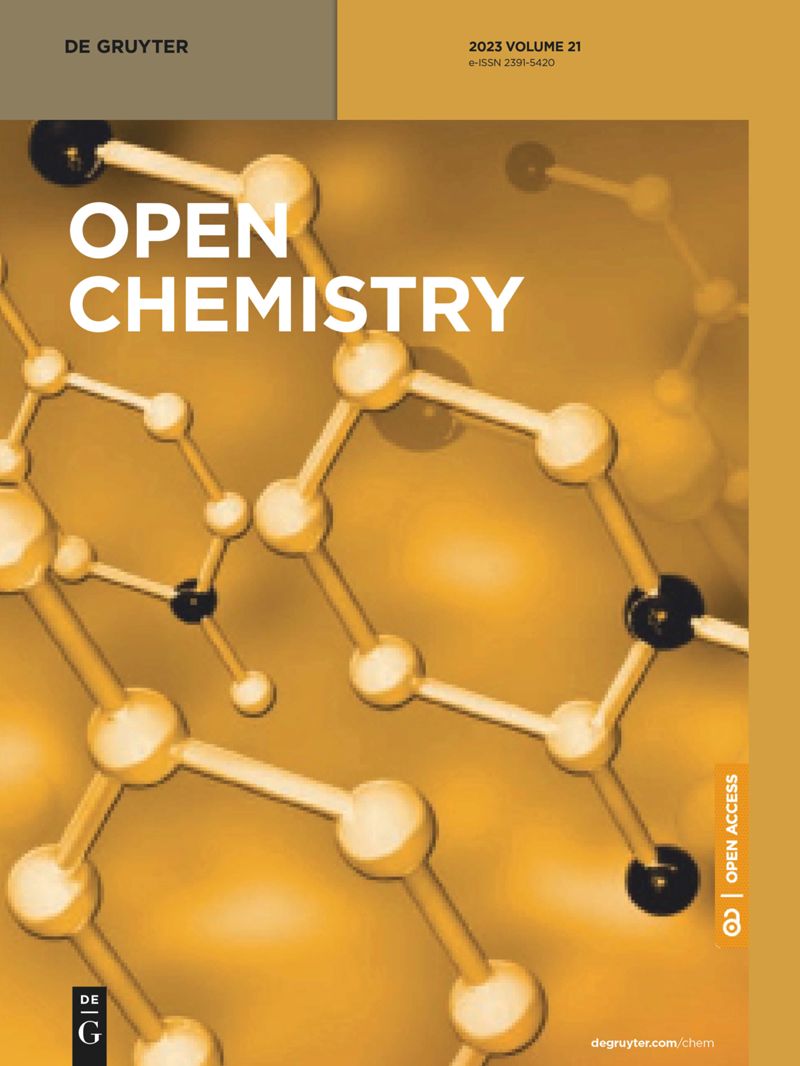植物乳杆菌 YW11 代谢产物的气相色谱-质谱分析及其对家族性肺纤维化枢纽基因的计算分析
IF 1.9
4区 化学
Q3 CHEMISTRY, MULTIDISCIPLINARY
引用次数: 0
摘要
本研究的目的是研究通过气相色谱-质谱(GC-MS)分析鉴定的植物乳杆菌 YW11 的代谢物与通过中枢基因分析发现的家族性肺纤维化病例中的 FN1 蛋白之间的相互作用。通过气相色谱-质谱(GC-MS)分析,确定了植物乳杆菌中的代谢物。然后,通过基因表达分析和功能注释来研究枢纽基因。构建了枢纽基因和转录因子(TFs)网络,突出了 FN1 在该疾病病因学中的重要性。采用分子对接法探讨了特征代谢物与 FN1 蛋白之间的相互作用。此外还进行了毒性分析。利用气相色谱-质谱对植物酵母 YW11 的 32 种活性化合物进行了表征。基因表达分析确定了 295 个差异表达基因,其中包括 10 个枢纽基因和 6 个 TFs,进一步支持了 FN1 蛋白在疾病中的参与。分子对接研究的结果表明了靶向 FN1 的治疗潜力,其中 FN1 与 2,4- 二叔丁基苯酚代谢物之间的相互作用的对接结果最好(能量为 -6.9 kcal/mol)。毒性分析和分子动力学模拟支持将 2,4-二叔丁基苯酚作为靶向 FN1 的候选物质。本文章由计算机程序翻译,如有差异,请以英文原文为准。
GC–MS analysis of Lactobacillus plantarum YW11 metabolites and its computational analysis on familial pulmonary fibrosis hub genes
The purpose of this research was to examine the interaction between metabolites of Lactobacillus plantarum YW11, characterized through GC–mass spectra (MS) analysis, and the FN1 protein in cases of familial pulmonary fibrosis, found from hub genes analysis. GC–MS analysis was performed to identify metabolites in L. plantarum . Then, gene expression analysis and functional annotations were conducted to investigate the hub genes. A network of hub genes and transcription factors (TFs) was constructed, highlighting the significance of FN1 in the disease’s etiology. Molecular docking was employed to explore the interaction between the characterized metabolites and the FN1 protein. Toxicity analysis was also carried out. Thirty-two active compounds of L. plantarum YW11 were characterized by GC–MS. The gene expression analysis identified 295 differentially expressed genes, including 10 hub genes and 6 TFs, providing further support for the involvement of FN1 protein in the disease. The results of the molecular docking studies suggest the therapeutic potential of targeting FN1, with the best docking result observed for the interaction between FN1 and the 2,4-di-tert -butylphenol metabolite (energy of −6.9 kcal/mol). The toxicity analysis and molecular dynamic simulations support the suitability of 2,4-di-tert -butylphenol as a candidate for targeting FN1.
求助全文
通过发布文献求助,成功后即可免费获取论文全文。
去求助
来源期刊

Open Chemistry
CHEMISTRY, MULTIDISCIPLINARY-
CiteScore
3.80
自引率
4.30%
发文量
90
审稿时长
6 weeks
期刊介绍:
Open Chemistry is a peer-reviewed, open access journal that publishes original research, reviews and short communications in the fields of chemistry in an ongoing way. The central goal is to provide a hub for researchers working across all subjects to present their discoveries, and to be a forum for the discussion of the important issues in the field. The journal is the premier source for cutting edge research in fundamental chemistry and it provides high quality peer review services for its authors across the world. Moreover, it allows for libraries everywhere to avoid subscribing to multiple local publications, and to receive instead all the necessary chemistry research from a single source available to the entire scientific community.
 求助内容:
求助内容: 应助结果提醒方式:
应助结果提醒方式:


